2017 KTM EXC Range: R&D Insights
KTM’s head R&D honcho, Bernhard Plazotta, speaks candidly about the technology that spearheads the brand’s completely new 2017 EXC range.
Bernhardt Plazotta has been with KTM for 25 years, and for the past decade he’s overseen the R&D program for KTM’s off-road models. That means he knows these bikes – past, present and future – better than anyone in the company’s Austrian HQ. At the recent launch for KTM’s 2017 enduro bikes in Spain, we asked the straight-shooting “Barni” to shed more background light on the new-gen Katos, and to divulge what’s in the pipeline for KTM’s off-road line-up.
THE TWO-STROKES
TM: In the tech presentation, when you explained that the new 250 and 300cc two-stroke engines reduced vibration by 50 percent, there was a look of disbelief on many journos’ faces. But testing the bikes seems to have vindicated that claim, right?
BP: Yes, the massive reduction in vibration was the first thing that everybody noticed about the new two-stroke engines. And that changes the entire riding experience. Basically, it makes the bikes more comfortable and less fatiguing to ride. From a design point of view, reducing that critical vibration by 50 percent also has huge implications. On our previous two-strokes, vibration created additional wear on things such as the axles and engine mounts. Plus we needed to use a different material in the shock bushings to prevent them wearing too fast. We also had to ensure that a rebound circuit hole drilled into the shock shaft was aligned front-to-rear because our endurance testing proved that the shaft would break if that hole was positioned laterally.
I understand that vibration on previous year-model two-strokes also made it more difficult for you to get their suspension dialled in.
Absolutely. When we used a high-speed video camera to shoot footage of the shock spring, we were amazed how much the spring was moving due to that vibration, and we knew immediately that this cannot be good for the shock’s performance and reliability. That footage helped explain why were always struggling to get the shock absorber set-up on the two-strokes. When you enter a set of braking bumps on a trailing throttle, the engine RPMs are in a critical range that tends to ‘bind’ the shock’s action up. Effectively, the vibrating spring prevents the free movement of the shock shaft in the early part of the stroke, which is critical to its performance through braking bumps. So with our previous models, we had to soften the settings to reduce this stiffness, but then that would compromise the shock’s overall performance. Now, with the reduced vibration on the 2017 250 and 300EXC, suspension set-up is easiest on our two-stroke models. Plus we no longer have to use a special shock bushing.
This vibration didn’t just miraculously disappear; it’s the direct result of KTM fitting a counter-balancer to this all-new engine. But this isn’t the first KTM has tested a two-stroke counter-balancer, is it?
When I started with KTM in 1992, they had just released the 250cc two-stroke engine that has formed the basis of the 250/300EXC engine until this completely new design for 2017. Of course, it had refinement in that time. In 1997, we introduced the hydraulic clutch and other mods. And in 2003, we moved the position of some rotating shafts, but the base engine has remained. As you rightly say, we did actually test a counter-balancer for our two-stroke engines in about 1995, but we ran into several design problems. Because the engine’s shafts were all larger and the air intake was positioned lower, it was not possible to properly fit the counter-balancer into the cases. We decided it was too expensive and complicated, and we gave up on the idea. With the all-new engine for 2017, however, we made sure there was room for the counter-balancer in its design. And because this reduced vibration so much, it then allowed us to save weight by using more critical parts. It’s amazing to think that it has been 25 years between major upgrades to our 250/300cc two-stroke engine. The 125cc two-stroke was almost as old. It was the first engine I was responsible for in 1997, and it wasn’t until last year on the 125SX model that we introduced a completely new engine … which is now used on the 2017 125XC-W enduro bike, of course.
Is it fair to say that, by replacing these two old two-stroke engines, KTM is making a very clear statement about its commitment to two-stroke development?
For sure it makes that statement. These new engines are also the first and only production two-stroke engines that use a counter balancer. Interestingly, like many other brands in the late 1990s, KTM also believed two-stroke engines were on borrowed time. Every three or four years – which is when we had to deal with a new set of regulations – we’d find ourselves thinking that it was impossible for our two-strokes to meet those regulations without compromising their performance too much. But we always managed to find a way, and the resurgence in two-strokes in more recent times has vindicated those efforts. For the 2017 models, however, we decided against trying to make the 125 and 150cc two-stroke models registrable because it was too difficult to maintain their performance and still meet the Euro IV regs. These will be closed-course models only.
FRAME & SUSPENSION
For 2012, the extra longitudinal flex built into the EXC models’ frame meant it became an added damping element to assist the suspension’s action. Is the 2017 frame simply an extension of that concept?
Yes, it is. It might seem like fine-tuning as we have only refined the frame’s tubing size and shape, but this has reduced the forces felt by the steering head enormously. Remember also the frame uses a smaller triangle, lateral head stays for the engine, and its upper shock mount is about 30mm further back. Together, these updates represent a really big change.
You’ve spoken a lot about what a critical role those new lateral head stays play in reducing vibration, but do they also complement the new frame’s design?
Absolutely they do. If we’d continued to use the 2016 bikes’ head stays for 2017, we would have only reaped half of the advantage of the new frame. Aside from helping reduce vibration, the revised stays and fixing points for 2017 allow the frame to flex in the way it was designed to. And when you combine the changes to the tubing size and geometry, the head stays and the relocated shock mount, it results in a frame that is 30 percent less rigid in the longitudinal plane. And that is a lot. Of course, those changes were not done in isolation; we also made the frame 20 percent more torsionally rigid for better cornering and straight-line stability.
This new frame appears almost identical to what’s used on the MX models. Is it, or are there more subtle differences than meet the eye?
Our MX models use an air fork and a rising-rate linkage for the shock, so we were never intending to simply slot the MX frame onto these enduro models and expect it would work perfectly. The frame was adapted specifically for enduro applications, but we did test and develop it in parallel with the MX frame to confirm that any changes we made were positive. Compared with the MXers, the EXC models’ steering head angle is half a degree less steep (which makes it the same as the 2016 bikes’ angle) and the 1-degree difference in the two swingarms’ angle makes the EXC models’ wheelbase 10-12mm longer.
Were the frame mods also made in conjunction with the all-new WP XPlor suspension?
Of course. Our testing showed us that the more forgiving frame gives the new fork a broader set-up window. Also, the internal changes that come on the XPlor fork – like sealing up the hydro-chamber, which is now longer – makes it much more versatile. It now works well across a wider range of terrain and rider weights. It’s just as forgiving over rocks on the trail, but will not bottom-out as easily as the previous open-cartridge fork did over motocross-style jumps. We think the performance improvement made by the new XPlor shock is even greater. Plus the entire shock is 600g lighter – about 350g of which is due to the progressive shock spring now used on all models.
NEW ENGINES
On paper, the horsepower gains for 2017 are big. But is a 62hp 500EXC-F too powerful for trail and enduro use?
Initially, when I saw the power numbers that our big-bore four-strokes engines were producing, I was against it [laughs]. I thought that 62hp from the 500 engine was too much. I was always adamant that you could not use more than 54 horsepower, maybe 58. And I thought anything above 60hp was unrideable. But our engine team has done an incredible job of making the power user-friendly and rideable for all the 2017 bikes. In previous years, the 500 was never my favourite bike as I found it too powerful for the tighter tracks I like to ride. But when I first rode the 2017 500EXC-F, I discovered that its relocated crank meant there was much less weight transfer to the front wheel when braking. And when the fork does not dive, the front-end retains the same light feel of the smaller capacity four-strokes.
“I was always adamant that you could not use more than 54 horsepower, maybe 58. But our engine team has done an incredible job of making the power user-friendly and rideable for 2017.”
Why use the MX models’ underside injector on these enduro models because you’ve already established it creates punchier power with more top-end? And that doesn’t necessarily suit an enduro engine.
To be perfectly honest, we would have relocated the injector position if we’d had time. But because the Euro IV homologation takes so much time, it was not possible this year. For each displacement, it takes us six to eight months to complete the EFI mapping. It needs to be homologated for Europe and for the USA, and it needs to be checked at each altitude. In other words, it’s a very complex process and it was our priority for the 2017 bikes. Interestingly, a few of our factory MXers – like Marvin Musquin – use the enduro models’ smaller 42mm throttle body for supercross (not the MX bike’s 44mm body) because he likes the more instant response it gives him at lower revs, and is not so concerned about top-end power for supercross.
WEIGHT vs RELIABILITY
Reducing weight without compromising reliability has always been a primary goal for motorcycle designers. But for 2017, it seems to have been an obsession for you guys.
Yes, that is true. Compared to their predecessors, we have taken between 3 and 5kg out of the 2017 models. To reduce weight, we have followed the same process for the past 15 years. We literally start with the small parts – a 3g saving on each bolt, for example – and work our way up. And when you add the saving up for more than 300 parts, the cumulative weight saving can be significant. And thanks to advances in Lithium Iron battery technology, we could save more than 1kg in that one part alone for 2017.
Do you think the market still has some reservations about the reliability of Lithium batteries? There were a few failures with these batteries in your 2016 MX models.
Five years ago, Lithium batteries cost about six times as much as a lead-acid one. These days, their price has come down, but they are still about 30 percent more expensive. Yes, they save us weight, but we would not pay more for a part that we thought was any less reliable. Consumers may have some lingering reliability concerns, but we are totally confident that it is not a risk because our EXC models use a larger and more powerful Lithium battery than the MX bikes’ battery. This same battery has been used on our two-stroke Freeride model (which does not have a kick-starter) for three years and it has performed flawlessly. It has also been a PowerParts for several years.
Congratulations on what has to be the most significant EXC range overhaul since … well, maybe ever.
Thank you. It’s been a huge amount of work to make so many changes to so many models. It was definitely tricky to bring all the new elements together for this 2017 range; to make sure that the various design teams were all moving in the same direction. Thankfully, we have a great team that communicates effectively. And it has been very satisfying to hear that all the journalists have had such a positive experience with the new bikes.
RELATED ARTICLES…
- Click here for an interview with KTM product development guru, Joachim Sauer. It’s a candid insight into the design philosophy of these new-generation EXC models, and what’s coming from KTM in the near future.
- Click here for an interview with KTM’s Michael Viertlmayr, the engineer credited with designing KTM’s new-generation powerplants.
- Click here for our ride impression of KTM’s 2017 EXC range from the international launch in Spain.
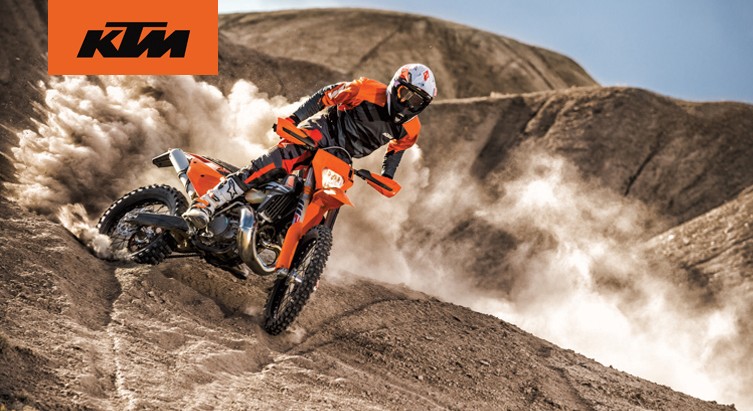
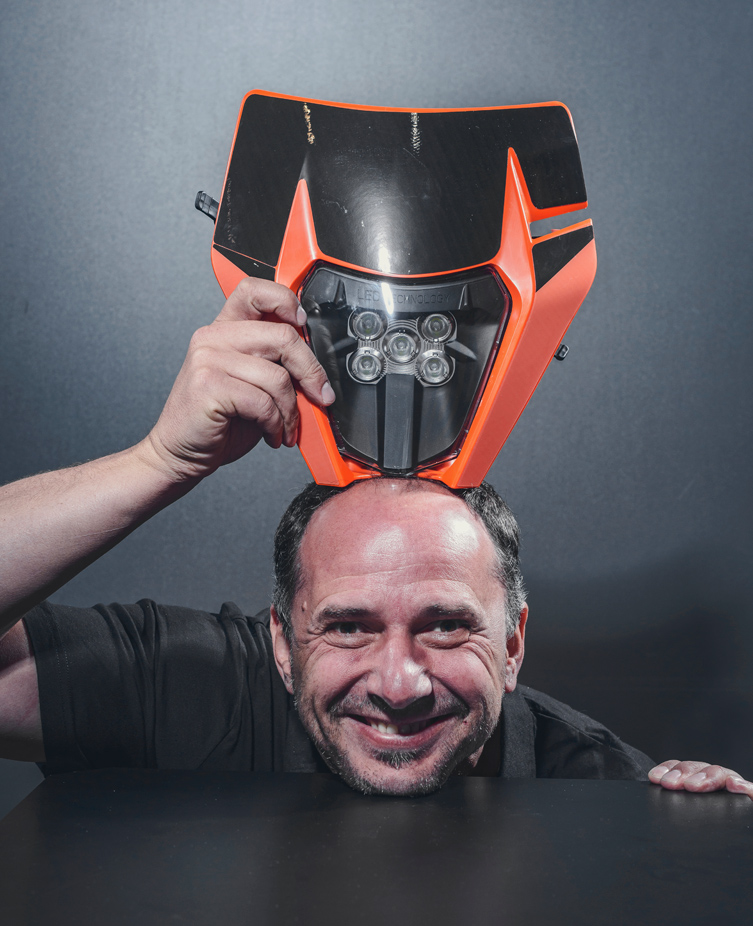
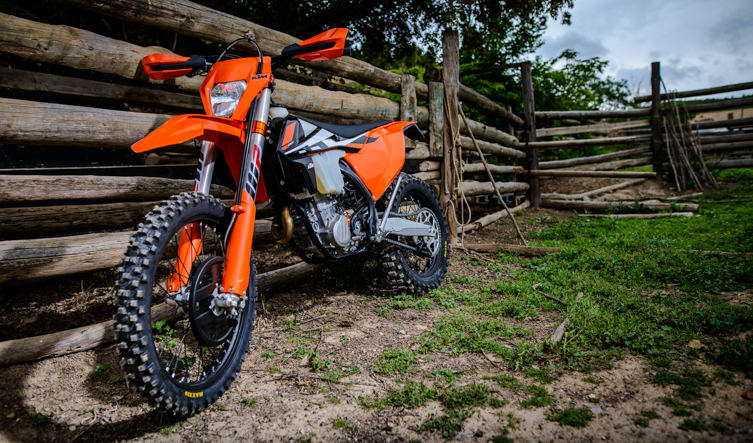
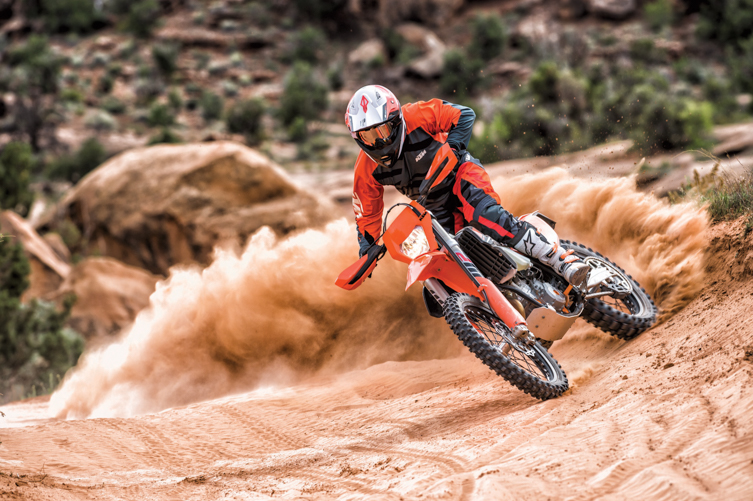

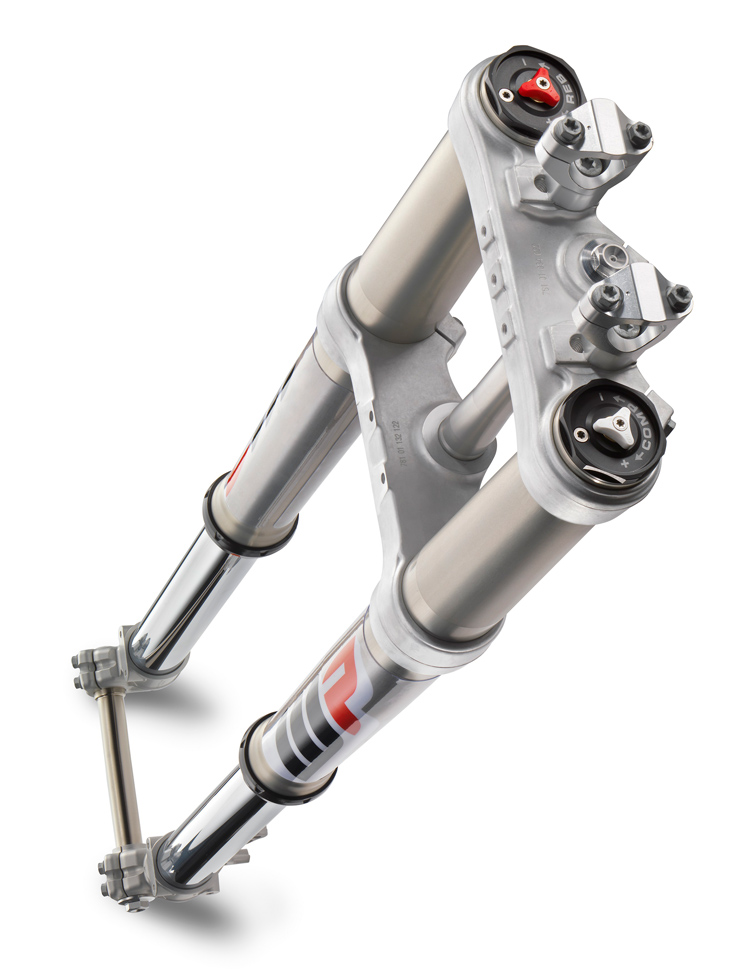
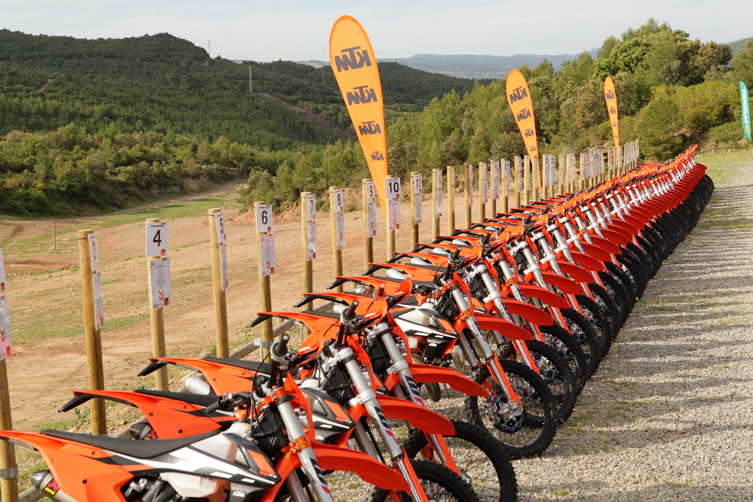







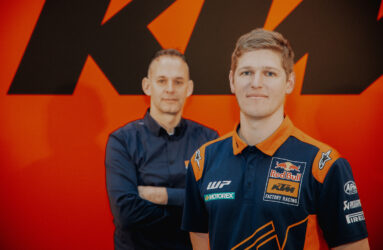
Be the first to comment...